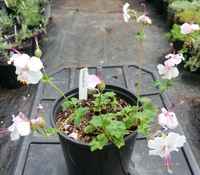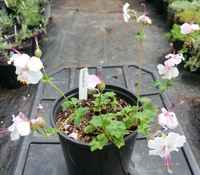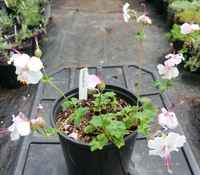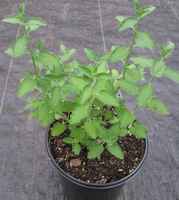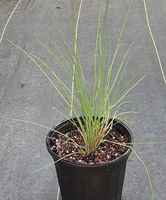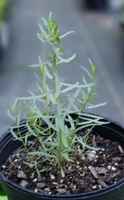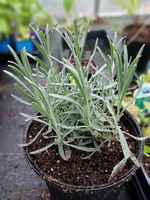- "The Market" Help

This page is where you can place your orders. If you're logged in to your account *and* the market is open, you will see quantity box an "Add to Cart" icon next to each item. If you just want one, click on the icon to add it to your cart. If you want more, you can either change the quantity and then click, or click the number of times you want.
Once you've finished shopping, click the checkout link in your shopping cart (located at the upper left side of this page, below this help area).
We take orders Sunday starting at 8am until Monday at 10pm.
If you have any problems with this site, please contact Catherine at stonesrivermarket@gmail.com or 615-542-1078. For routine questions, email is preferred over a phone call.
Be sure you understand who we are and how we work before you create an account and place an order!
Ordering has been temporarily disabled. We only take orders on Sundays (all day long) and Mondays (until 10pm), so please return then to order.
If you don’t already have an account, you can create one here.
What's New
Hosta13 Plant, Miniature - ...
Price: $8.50
( Gallon Pot )
Shrub Group (large) - ...
Price: $37.50
( 3 nice shrubs )
Shrub (large) - Azalea15, ...
Price: $16.00
( 3 Gallon pot )
Herb Plant - Rosemary, ...
Price: $12.00
( gallon pot )
10" Mini Snapdragon Planter
Price: $22.00
( each 10" planter )
Stonecrop Plant
Price: $8.50
( Gallon pot )
Fern Plant - Athyrium, ...
Price: $8.50
( Gallon pot )
Order History
Your Last Ten Orders
You can find your entire order history in the "Your Account" section.
Click on an order to see the items you ordered shown here.
Live Plants
10" Mini Snapdragon PlanterGrower: Dogwood Valley Greenhouse
Price: $22.00 ( each 10" planter )Available (Exact): 1
Five mixed color miniature snapdragons in an earthtone 10 inch plastic planter. Snapdragons tolerate cold weather pretty well, and also continue blooming into hot weather. These bright colors will liven your deck or patio all spring and summer, if you keep them well watered. The warmer the weather, the more water they will need. If you bring them to part shade as the weather warms, they may tolerate the heat better.
close Five mixed color miniature snapdragons in an earthtone 10 inch plastic planter. Snapdragons tolerate cold weather pretty well, and also ...
more
10" Spring Viola PlanterGrower: Dogwood Valley Greenhouse
Price: $22.00 ( each bowl )Available (Exact): 1
Five multicolored Violas ("baby pansies") in an earthtone 10 inch plastic planter. These spring colors will liven your deck or patio till the really hot weather arrives, and then a bit longer. The warmer the weather, the more water they will need. If you bring them to a part shade location as the weather warms, they will bloom longer this spring. For renewed fall blooms, regularly water and care for them over summer.
close Five multicolored Violas ("baby pansies") in an earthtone 10 inch plastic planter. These spring colors will liven your deck or ...
more
Ajuga Bugleweed VariegatedGrower: C&M Valley Farm
Price: $5.00 ( 4 inch pot )Available (Exact): 3
Variegated crisp lines Perennial with pink spring blooms. Hardy, attractive creeper for light shade conditions
Astilbe Plant - Medium RedGrower: Dogwood Valley Greenhouse
Price: $8.50 ( Gallon pot )Available (Estimated): 4
Astilbes are long-blooming plume-like flowers, held above airy foliage. Astilbes are one of the easiest perennial flowers to grow, but they give a high return. Virtually pest free, they can light up the shade garden. Beautiful red flowers.
close Astilbes are long-blooming plume-like flowers, held above airy foliage. Astilbes are one of the easiest perennial flowers to grow, but ...
more
Beard-tongue Plant, Pale PinkGrower: Dogwood Valley Greenhouse
Price: $8.50 ( trade gallon pot )Available (Estimated): 0
Penstemons come from areas with rough growing conditions and should never be exposed to wet or damp earth. A thin, rocky soil in full sun is best. Penstemon species are often used in xeriscape landscaping, as many are native to desert or alpine regions and thus quite hardy. Native Americans long used Penstemon roots to relieve toothache.
Foliage is evergreen in warmer climates. Tubular flowers are in clusters atop strong stems, somewhat like foxglove, and blooming from spring into summer. Plants are best set out in groups so that a mass of flowers is in view. Cut back each stem after flowering to a place just above a set of leaves that show new growth. You may get another flowering later in the summer or early fall.
Wait until all chance of a freeze is over, then cut back your penstemon, leaving stems that are just 6 inches long. This way, the plant will bush out and have a more compact form.
close Penstemons come from areas with rough growing conditions and should never be exposed to wet or damp earth. A thin, ...
more
Campbell's #33 TomatoGrower: Rainbow Hill Farm
Price: $5.00 ( 1 four inch pot )Available (Estimated): 14
Very similar to Campbell tomato but not as large. Bright red with green shoulders. strong disease resistance. Grown organic in biodegradable pots.
close Very similar to Campbell tomato but not as large. Bright red with green shoulders. strong disease resistance. Grown organic in ...
more
Columbine Plant, AlpineGrower: Dogwood Valley Greenhouse
Price: $8.50 ( trade gallon pot )Available (Exact): 1
Native to Europe's high meadows and mountain slopes of the Alps, Aquilegia alpina, commonly known as Alpine Columbine, is a compact species with charming, bright violet-blue, bonnet-shaped, nodding flowers (2-3 in. wide; 5-7 cm), which rise elegantly on slender stems above a lovely fern-like, blue-green foliage.
Columbines bloom in early to mid-spring They like medium to light watering once established in poor to average, but well-drained soil. Partial shade is preferred, but full sun is tolerated with slightly more watering. The highly attractive blooms are long-lasting cut flowers. Consider adding Aquilegia to rock gardens, shady borders, or in masses along walks or drives.
close Native to Europe's high meadows and mountain slopes of the Alps, Aquilegia alpina, commonly known as Alpine Columbine, is a ...
more
Columbine Plant, Purple & WhiteGrower: Dogwood Valley Greenhouse
Price: $8.50 ( trade gallon pot )Available (Estimated): 1
Columbines bloom in April and early May. They like medium to light watering once established in poor to average, but well-drained soil. Partial shade is preferred, but full sun is tolerated with slightly more watering. The highly attractive blooms are long-lasting cut flowers. Consider adding Aquilegia to rock gardens, shady borders, or in masses along walks or drives.
close Columbines bloom in April and early May. They like medium to light watering once established in poor to average, but ...
more
Columbine Plant, Purple & WhiteGrower: Dogwood Valley Greenhouse
Price: $8.50 ( gallon pot )Available (Estimated): 1
Columbines bloom in early to mid-spring They like medium to light watering once established in poor to average, but well-drained soil. Partial shade is preferred, but full sun is tolerated with slightly more watering. The highly attractive blooms are long-lasting cut flowers. Consider adding Aquilegia to rock gardens, shady borders, or in masses along walks or drives.
close Columbines bloom in early to mid-spring They like medium to light watering once established in poor to average, but well-drained ...
more
Coreopsis Plant, DwarfGrower: Dogwood Valley Greenhouse
Price: $8.50 ( Gallon pot )Available (Exact): 0
This lovely perennial will delight you with bright yellow blooms all spring. Continue to deadhead the plants to extend the flowering season. Dwarf Coreopsis is an excellent choice for rock gardens, edging or borders. Plant in full sun to part shade.
close This lovely perennial will delight you with bright yellow blooms all spring. Continue to deadhead the plants to extend the ...
more
Elderberry BushGrower: Dogwood Valley Greenhouse
Price: $7.50 ( Gallon pot )Available (Exact): 5
Dug this spring from a grove in my yard and potted in gallon pots. These are first-year plants, still small, and may not bloom next year.
This native shrub, American Elder or Sambucus canadensis, has been known for its delicious fruit (for use in jellies, pies or wine) since native American times. It has more recently been used in landscapes for its spectacular blossoms and dramatically colored berries. The Elderberry is also a fantastic wildlife habitat, providing both shelter for small animals and a healthy food source. Elderberries are both drought and cold-tolerant, adapt to almost any soil type and most drainage conditions and have few pests. They grow 6 to 12 feet high in an oval or rounded shape. The white flower clusters are generally 6 to 10 inches in diameter and are very showy with a nice fragrance. The fruit, which is pleasantly tart but high in vitamin C, is a smooth round berry measuring three-sixteenths-inch in diameter growing in broad flat clusters.
Grows in zones: 3 - 9
close Dug this spring from a grove in my yard and potted in gallon pots. These are first-year plants, still small, ...
more
Fern Plant - Athyrium, silver-greenGrower: Dogwood Valley Greenhouse
Price: $8.50 ( Gallon pot )Available (Estimated): 2
A vigorous and easy to grow fern with a neat, formal, upright mound of rigid, silver-green fronds with deep purple midribs. Perfect for the woodland garden as a backdrop to hostas or paired with coral bells. Thrives in moist, shady settings, though more tolerant of brief dry spells than most ferns of its type. An herbaceous perennial.
close A vigorous and easy to grow fern with a neat, formal, upright mound of rigid, silver-green fronds with deep purple ...
more
Fern Plant - Giant Japanese PaintedGrower: Dogwood Valley Greenhouse
Price: $8.50 ( Gallon pot )Available (Estimated): 3
Giant Japanese Fern is thought to be a result of a cross between a typical Athyrium nipponicum pictum, Japanese Painted Fern, and its cousin the lady fern (Athyrium filix-femina). A very unique and rewarding hardy fern, this delightful selection performs well in any rich, evenly moist soil. It forms a massive, arching 3 feet tall clump of silvery fronds with green highlights on dark purple stems. Terrific for edging the shade border, in the rock garden, or in containers. Deciduous. Leaves may be trimmed to the ground in late fall or early spring. Plants are easily divided in spring, every 3 to 4 years. As with all athyriums, deer-resistance is excellent.
close Giant Japanese Fern is thought to be a result of a cross between a typical Athyrium nipponicum pictum, Japanese Painted ...
more
Fern Plant - Japanese Painted (smaller, more burgundy than Painted)Grower: Dogwood Valley Greenhouse
Price: $8.50 ( Gallon pot )Available (Estimated): 3
This lovely fern grows around 12-18" tall and slowly multiplies to form a large clump 24" across. The fronds are approximately 18" long and are a soft-grey metallic color with hints of red and blue. The center stem is red so the contrast is excellent. This variety has more burgundy color at all seasons than the other one I offer.
This fern prefers partial rather than deep shade. It is an excellent contrast plant to other shade perennials, such as Hosta, bleeding hearts, columbines, astilbe, and heuchera.
close This lovely fern grows around 12-18" tall and slowly multiplies to form a large clump 24" across. The fronds are ...
more
Fern Plant - Northern LadyGrower: Dogwood Valley Greenhouse
Price: $8.50 ( Gallon pot )Available (Estimated): 3
This taller fern features brilliant violet-red stems that keep their color from spring through fall and turn the long, lacy green fronds above them into a glittering canopy! A hardy native American shade-lover that combines well with just about everything in the border.
close This taller fern features brilliant violet-red stems that keep their color from spring through fall and turn the long, lacy ...
more
Fern Plant - Northern LadyGrower: Dogwood Valley Greenhouse
Price: $8.50 ( Gallon pot )Available (Estimated): 3
This taller fern features brilliant violet-red stems that keep their color from spring through fall and turn the long, lacy green fronds above them into a glittering canopy! A hardy native American shade-lover that combines well with just about everything in the border.
close This taller fern features brilliant violet-red stems that keep their color from spring through fall and turn the long, lacy ...
more
Fern Plant - OstrichGrower: Dogwood Valley Greenhouse
Price: $8.50 ( Gallon pot )Available (Exact): 2
Ostrich fern is popular for its erect stature and graceful arching fronds (leaves) resembling huge ostrich feathers, up to 5 feet long and 3 feet wide. Each frond is cut into numerous leaflets and subleaflets. As they mature they spread at the tip, creating a lovely canopy effect.
Ostrich fern is very easy to grow in a variety of light exposures, but prefers shade or partial shade. It colonizes fairly fast by spreading rhizomes, eventually forming large, glorious colonies, but rarely becomes invasive. Ostrich fern grows best in moist, rich soil conditions but tolerates occasional drought when established. It's excellent around a pond or in a damp border. Few plants impart such a light, airy, cooling effect in the landscape, or provide such a range of foliage textures for the garden, as Ostrich fern.
Fiddleheads are edible, and this is the preferred species to eat. However, it should only be eaten in moderation as all ferns contain varying amounts of carcinogenic compounds.
The plant is not evergreen, but the fertile fronds turn black and persist through the winter.
They perform better and better with age. Do not plant too deep; set the crowns at or just below soil level. A year-round mulch is recommended. Zones 2-7, and native south to Virginia and Missouri.
close Ostrich fern is popular for its erect stature and graceful arching fronds (leaves) resembling huge ostrich feathers, up to 5 ...
more
Gaura Plant - WhiteGrower: Dogwood Valley Greenhouse
Price: $8.50 ( trade gallon pot )Available (Estimated): 2
Plants bloom for many weeks, with loose sprays of pure white flowers which move constantly, looking like a cloud of small butterflies. Although Gaura may not always winter reliably, plants flower for the entire summer and fall, so consider using it even as an annual. Superb in containers, the subtle color blends easily in borders. Drought tolerant once established.
close Plants bloom for many weeks, with loose sprays of pure white flowers which move constantly, looking like a cloud of ...
more
Geranium (Cranesbill) - White FlowersGrower: Dogwood Valley Greenhouse
Price: $8.50 ( Gallon pot )Available (Estimated): 5
Geraniums were once considered the "must have" plant for English gardens. Perennial geraniums are not related to annual geraniums, but are cold-hardy, long-lived perennials. It is also called Cranesbill because of the shape of the seed pods once the petals have faded. Seed heads snap open like bird beaks to release the seeds. Geraniums bloom for months beginning around May and continuing until October or November. If the cup shaped flowers fade in the summer heat trim the plant back and water deeply to encourage repeat blooming. Geraniums prefer light shade and well-drained soil.
close Geraniums were once considered the "must have" plant for English gardens. Perennial geraniums are not related to annual geraniums, but ...
more
Geranium (Cranesbill) - White FlowersGrower: Dogwood Valley Greenhouse
Price: $8.50 ( Gallon pot )Available (Estimated): 5
Geraniums were once considered the "must have" plant for English gardens. Perennial geraniums are not related to annual geraniums, but are cold-hardy, long-lived perennials. It is also called Cranesbill because of the shape of the seed pods once the petals have faded. Seed heads snap open like bird beaks to release the seeds. Geraniums bloom for months beginning around May and continuing until October or November. If the cup shaped flowers fade in the summer heat trim the plant back and water deeply to encourage repeat blooming. Geraniums prefer light shade and well-drained soil.
close Geraniums were once considered the "must have" plant for English gardens. Perennial geraniums are not related to annual geraniums, but ...
more
Geranium (Cranesbill) - White FlowersGrower: Dogwood Valley Greenhouse
Price: $8.50 ( Gallon pot )Available (Estimated): 5
Geraniums were once considered the "must have" plant for English gardens. Perennial geraniums are not related to annual geraniums, but are cold-hardy, long-lived perennials. It is also called Cranesbill because of the shape of the seed pods once the petals have faded. Seed heads snap open like bird beaks to release the seeds. Geraniums bloom for months beginning around May and continuing until October or November. If the cup shaped flowers fade in the summer heat trim the plant back and water deeply to encourage repeat blooming. Geraniums prefer light shade and well-drained soil.
close Geraniums were once considered the "must have" plant for English gardens. Perennial geraniums are not related to annual geraniums, but ...
more
Herb Plant - CatnipGrower: Dogwood Valley Greenhouse
Price: $8.50 ( Gallon pot )Available (Estimated): 1
Nepeta cataria attracts pet cats, and causes them to rub on the plant, roll on the ground, drool, be sleepy or anxious, or consume much of the plant. Catnip has a history of human medicinal use for its soothing properties. It has also been known to have a slightly numbing effect. The plant has been consumed as a tea, juice, tincture, infusion or poultice. Nepetalactone is a mosquito and fly repellent. Catnip oil is a repellent against mosquitoes, cockroaches and termites.
close Nepeta cataria attracts pet cats, and causes them to rub on the plant, roll on the ground, drool, be sleepy ...
more
Herb Plant - ChivesGrower: Dogwood Valley Greenhouse
Price: $8.50 ( gallon pot )Available (Estimated): 3
Chives belong to the same family as onion, leeks and garlic. They are a hardy, drought-tolerant perennial growing to about 10-12 inches tall. They grow in clumps from underground bulbs and produce round, hollow leaves that are much finer than onion. In mid-summer, they produce round, pink flowers similar in appearance to clover.
Chives prefer a full sun location and are tolerant of a wide variety of soils but will grow best in soils that are high in organic matter. Chives are most commonly propagated by dividing the clumps in early spring. Clumps should contain about 4-6 bulbs.
Plants that are harvested frequently benefit from supplemental fertilizer during the season. Chives can self-sow and overtake a garden unless flowers are removed before they fade. Chives also make attractive edging in the perennial border and flowers can be cut for arrangements.
close Chives belong to the same family as onion, leeks and garlic. They are a hardy, drought-tolerant perennial growing to about ...
more
Herb Plant - French TarragonGrower: Dogwood Valley Greenhouse
Price: $8.50 ( Gallon pot )Available (Exact): 2
French Tarragon (Artemisia dracunculus var. sativa) is the commonly grown temperate-zone tarragon, with a sweet anise flavor, used for culinary purposes. Clip the leaves into salads and on top of soups, to flavor sauces, or with shellfish, fish, chicken, and turkey.
French tarragon plants grow up to 24 inches high and 12 inches wide in two years. The leaves are narrow, up to 2 inches long, and have a fresh green color. The flowers are tiny, pale green, and sterile. Don't confuse it with
Russian tarragon (Artemisia dracunculoides), a close relative which has no flavor.
Tarragon is not particular about temperature and can be grown from Zone 2 to Zone 9. Tarragon’s roots must have fast-draining soil to prevent rot. Plant tarragon in a raised bed where good drainage is ensured.
Divide tarragon in late winter or early spring. Young plants need to be watered every other day during dry weather. Mature plants should be watered every three days to encourage a continual supply of fresh leaves. Mature plants can survive for long periods without water, but under these conditions they will not grow new leaves.
Although average to good garden soil is adequate for tarragon, top-dress with compost every winter to ensure that plants growing for six or seven years do not lose their flavor. If your soil is acidic, tarragon benefits from an application of dolomite for alkalinity and magnesium.
Container growing is easy and works well for one season, but the roots soon take up the space of all but the largest container, and the leaves lose flavor. We have had no problems from pests and diseases and theorize that the anise flavor works as a repellent.
Cut back in June for a continuous harvest. Preserve the leaves in vinegar, or chop and freeze tarragon in water in ice cube trays. However you handle it, tarragon in the kitchen is a delight, as its delicate flavor complements many foods.
close French Tarragon (Artemisia dracunculus var. sativa) is the commonly grown temperate-zone tarragon, with a sweet anise flavor, used for culinary ...
more
Herb Plant - Lavender x intermedia - "Phenomenal"Grower: Dogwood Valley Greenhouse
Price: $12.00 ( gallon pot )Available (Estimated): 2
"Phenomenal" Lavender has it all: exceptionally tolerant of both high heat and harsh winter, this easy-to-grow lavender even shows resistance to the effects of humidity. Highly fragrant with concentrated essential oils, "Phenomenal"'s spikes of purple-blue flowers attract butterflies and bees to the garden. Edible, deer-resistant and fast-growing, this silver-leafed lavender has left all other new introductions in the dust! (Lavandula x intermedia)
A superior plant for hot, dry slopes and banks, rock gardens, and natural rocky outcroppings. Good in Mediterranean style gardens, traditional mixed borders, and large artistic pots. Grow in average, dry to medium, well-drained, alkaline soils in full sun.
Used in perfumes, sachets, oils and for medicinal purposes. Used to deter insects when placed in a closet or room.
Attracts butterflies.
Remove faded flowers to promote continued bloom. Prune to shape in spring after new leaves appear. Prune back to 8” in spring every 3 years to control plant size and to promote robust, new growth.
close "Phenomenal" Lavender has it all: exceptionally tolerant of both high heat and harsh winter, this easy-to-grow lavender even shows resistance ...
more



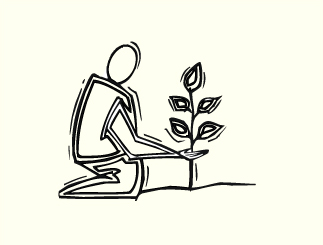
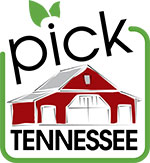

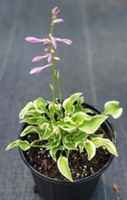
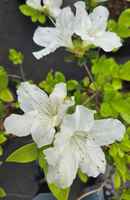
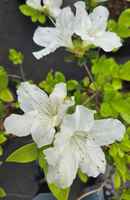
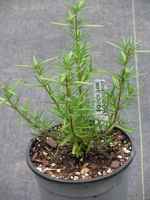
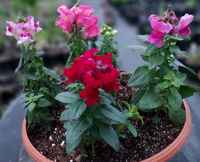
.jpg?1711947065)
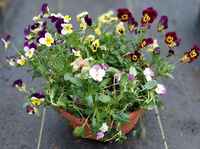

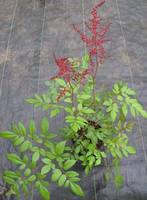
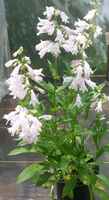
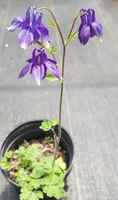
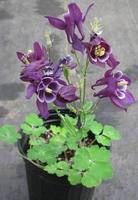
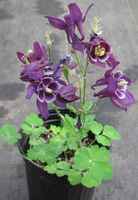
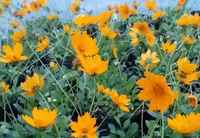
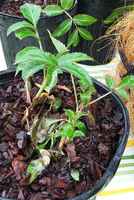
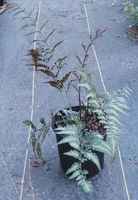
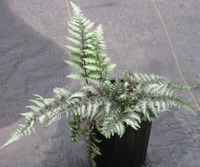
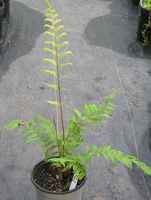
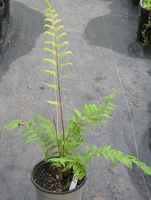
.jpeg?1522475208)

